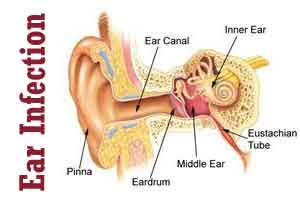- Home
- Editorial
- News
- Practice Guidelines
- Anesthesiology Guidelines
- Cancer Guidelines
- Cardiac Sciences Guidelines
- Critical Care Guidelines
- Dentistry Guidelines
- Dermatology Guidelines
- Diabetes and Endo Guidelines
- Diagnostics Guidelines
- ENT Guidelines
- Featured Practice Guidelines
- Gastroenterology Guidelines
- Geriatrics Guidelines
- Medicine Guidelines
- Nephrology Guidelines
- Neurosciences Guidelines
- Obs and Gynae Guidelines
- Ophthalmology Guidelines
- Orthopaedics Guidelines
- Paediatrics Guidelines
- Psychiatry Guidelines
- Pulmonology Guidelines
- Radiology Guidelines
- Surgery Guidelines
- Urology Guidelines
Now smartphones could diagnose ear infection

London : Swedish researchers have developed a new method to diagnose ear infections using smartphones and the cloud.
"Because of lack of health personnel in many developing countries, ear infections are often misdiagnosed or not diagnosed at all. This may lead to hearing impairments, and even to life-threatening complications," said one of the researchers, Claude Laurent from the Umea University in Sweden.
The researchers focused on diagnosis of otitis media, inflammation of the ear especially in the middle ear that annually affects half a billion children worldwide.
Not treating the ear infection can be dangerous, potentially leading to hearing impairments, and in certain extreme cases, can even have life-threatening complication, the researchers said.
The software based system consists of a cloud-based analysis of images of the eardrum taken using an otoscope an instrument used in the medical examination of ears.
The image is then uploaded to the cloud via a smartphone, where it's automatically analysed and compared with high-resolution archive imagery.
The software looks for predefined visual features, and places the new image in one of five diagnostic groups.
The findings, published in the journal EbioMedicine, showed that the automatically generated diagnoses based on images taken with a commercial video-otoscope had an accuracy of 80.6 percent.
The test could provides rapid access to accurate and low-cost diagnoses in developing countries.
"This method has great potential to ensure accurate diagnoses of ear infections in countries where such opportunities are not available at present," Laurent maintained.

Disclaimer: This site is primarily intended for healthcare professionals. Any content/information on this website does not replace the advice of medical and/or health professionals and should not be construed as medical/diagnostic advice/endorsement or prescription. Use of this site is subject to our terms of use, privacy policy, advertisement policy. © 2020 Minerva Medical Treatment Pvt Ltd